Trusted by many aquarists, Aquarentarium social media boasts the industry's top Instagram followers (11K) and YouTube Channel Aquarium University's subscribers (34K).
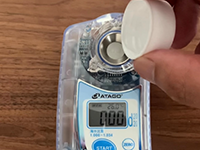
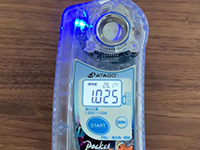
To measure the density of saltwater fish and coral tanks, we used to use a simple plastic hydrometer and digital hydrometer from another manufacturer.
However, that simple hydrometer broke in just a few months, and the digital hydrometer from another company had problems, such as the power not turning on after being used a few times, and we worried about issues with durability.
Then we found ATAGO`s digital salinity meter (PAL-Coral Reef Fish), and liked how it is accurate no matter how many times it is used, is easy to carry, and has a moderate weight with a high-class feel.
As a side note, we like the way it flashes a blue light during measurement!
We measure density tens of thousands of times a year, so we will continue to use it regularly.
Thank you for developing and selling a wonderful product!
■Click here forAquarentarium’s website.
In Ritto City, Shiga Prefecture, we specialize in making additive-free bacon that does not use coloring agents, coloring agents, or preservatives.
The salt meter "PAL™-SALT" is used during the manufacturing process and salt removal stage.
Bacon is made by smoking salted and aged pork meat. Immediately after salting, the salt content is high, and the degree of salt immersion differs between the inside and the surface, so "salt removal" is performed to achieve a uniform and appropriate salt content. Also, by removing the salt, it is possible to wash away unnecessary things such as odors.
It seems that he used to use a salt meter for home use, but when he started using PAL™-SALT, he said, "I can measure it more accurately. There is no blurring."
Check the finished bacon with the tongue of a craftsman. At the salt removal stage, the salt content is well managed to create a satisfying taste.
It takes 7 days for salting, and it is said that it will be more tasty if it is aged slowly during that time.
Ritto Smoked Kobo's bacon is sold to tourists at roadside stations. Bacon that is carefully made with all your heart and soul. Please enjoy it when you drop in near us.
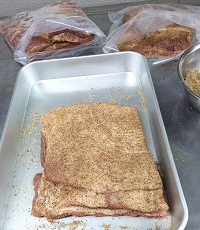
rubbing salt
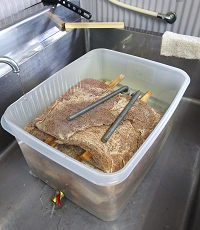
Desalting
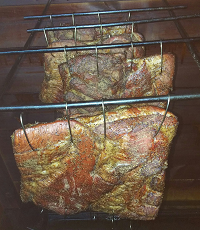
Smoked
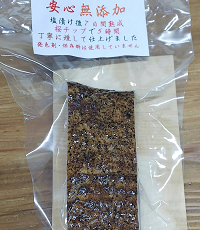
Photo of the finished product
Located in the Izu city of Shizuoka prefecture, bluelab is a company that retails numerous types of natural seawater for different uses that meet the requirement of various species. The property and composition of water may vary depending on its depth, even if it was collected from the same location.
Nazeem 10 is seawater collected near the ocean surface. Taking pride in “fresh live seawater” that is not stored, Nazeem 10 is ideal for fish, sea anemones, and coral.
Nazeem 800 is deep ocean seawater pumped and collected from IzuAkasawa at the depth of 800m below the ocean surface. At this sea level, the average temperature is around 4℃ (39.2℉) and it is rich in nutrients due to the increased water pressure. The ocean water is used to supplement nutrients in a fish tank with soft coral, seaweed, and shellfish such as shrimp. It is used in various settings, including fish market and fish farming.
Buffered (pH 8.3) and non-buffered Nazeem 10 and 800 are available.
Mr. Shimazawa from bluelab has been using an ATAGO's salt meter, ES-421 to monitor the salt concentration in seawater. This time, Mr. Shimazawa tried PAL™-Fish Tank, which can measure and display seawater concentration. To our delight, Mr. Shimazawa highly praised PAL™-Fish Tank’s ease of use, compactness and the fact measurement results display within 3 seconds with a push of a button.
Did you know that specific gravity changes with water temperature when you are making artificial seawater or changing its concentration? PAL™-Fish Tank is equipped with automatic temperature compensation feature. Unlike hydrometer that requires to compensate for the temperature of water, the measurement from PAL-Fish Tank does not have to be compensated.
As a side note, bluelab kindly offered us use of their ocean water when we were developing and testing PAL™-Fish Tank. In Tokyo, where our head office is, it was difficult to access clean ocean water. Not only bluelab provided us seawater, they generously offered their expert advice.
Natural Seawater Bluelab’s Website
http://www.bluelab.jp/
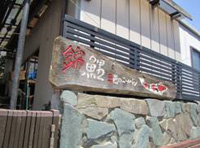
NIPPAN carp farm is surrounded by idyllic fields
located about 30 minutes by bus and walk
from Katsutadai Station.
NIPPAN Carp Farm Co., Ltd., is located in Hanamigawa Ward, Chiba City, Chiba Prefecture. In addition to the civil engineering business, he runs a carp farm and sends out beautiful Nishikikoi that will win the competition.
Carp are freshwater fish, but in fact, the body fluids of carp contain a little salt, so they always adjust their osmotic pressure to live. When carp loser energy, carp cannot use their power to adjust the osmotic pressure, so it needs to bathe in salt water. ATAGO's PAL™-SALT is used to adjust the salt content to the optimum level.
We interviewed President Sugawara, who has been producing Nishikikoi for more than 50 years.
It is usually bred in fresh water and bathed in salt water when it becomes weak. Mr Sugawara who has been watching the carp for many years, can easily know it by checking that inactive individual is in the corner of the pond or swimming with his mouth facing the surface of the water.
To make salt water, fill a 1-ton with water in aquarium and add salt to make 0.3-0.5% salt water. The concentration is adjusted according to the fish body and symptoms. It usually let the carp bathe in salt water for 3 days to 1 week.
I tried other salt meters, but those units had problems such as the battery was exhausted quickly or broke immediately, I came to know ATAGO's Salt meter from a vendor in Niigata Prefecture. (*Nishikikoi production is thriving in Niigata prefecture, and Mr. Sugawara is also from Niigata).
We were pleased to hear that PAL™-SALT is durable, highly reproducible, and easy to clean the measuring section.
We have participated in Nishikikoi fairs held in prefectures and throughout Japan. At the Chiba Prefectural Tournament in November 2018, all 18 bodies exhibited by size category won the championship, which was an amazing result. People who heard the reputation come in search of good Nishikikoi.
The size selling the most is about 15 cm of year-old fish (fish born that year) which price could reach to 50,000 yen. Its value increases as it grow larger. If it gets sick during growing, the value does down.Mr. Sugawara also gives advice on saltwater bathing to his customers.
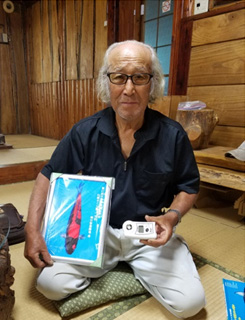
Goshoku Nishikikoi who won the Chiba
Prefectural Tournament & President Sugawara
We felt that he really loves Nishikikoi from his appearance of feeding to young nishikikoi in the pond.
Mr. Sugawara, thank you for telling us a valuable story today.
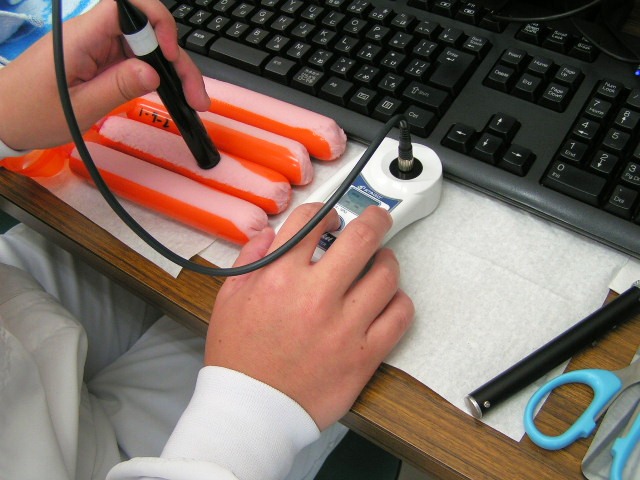
MARUZEN CO., LTD., who is familiar with "Chi Kama ®" and "Homo Sausage ®".
They have been manufacturing and selling paste products and retort foods for more than 60 years since our founding in 1956.
The Minori Factory we visited this time is one of Maruzen's factories in Omitama City, Ibaraki Prefecture, and has acquired HACCP, and is working to manufacture safe and secure products. Today, we interviewed Mr. Miyata of the Quality Assurance Office.
The Minori Factory produces a lot of sausages and chi sickles a day. Salt content is also controlled under strict quality control, and PAL™-FM1 and PAL™-SALT are used regularly.
We received a very happy voice saying that PAL™-FM1 can be measured very simply by inserting and very easy to use.It does not need to crush (※) the sample before measurement, which can improve the work efficiency very much.It helps to check evenly in mass production. PAL™-SALT is used for sampling inspection.
* Raikai is a technical term used in the kamaboko industry and refers to mashing.
They are using Salt meter to check the ingredients of the finished product. Suprisingly, their products never out of the standard! We can understand it from their thorough manufacturing method.
I think that we can make delicious and safe products because of the thorough manufacturing method.
Thank you very much for your kindness during your busy schedule and for sharing your valuable story. We look forward to working with you for a long time to come.
Let us continue to be fans of MARUZEN's affectionate products.
Website of MARUZEN CO., LTD.
http://www.mrz.co.jp/
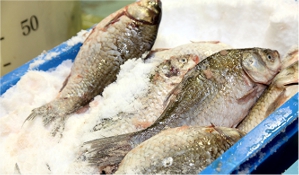
MuraiSuisan uses the salt meter PAL™-SALT PROBE.
Funazushi is a type of preserved food called "nare zushi", which is made by soaking crucian carp in salt and rice and fermenting it naturally. In Shiga prefecture, it was a traditional product that existed as a special product during the Heian period and was presented to the imperial court in Kyoto, and is a local taste that has been familiar to the common people.
Since its founding, MuraiSuisan has been purchasing about 30 tons of live crucian carp annually, and has consistently manufactured and sold salted crucian carp and cooked rice-pickled crucian carp.
The crucian carp is cultivated with the underground water of the Suzuka Mountains straddling Mie and Shiga prefectures by pumped up, and by the highest quality food that has been thoroughly controlled and independently developed. Thorough quality control is carried out to preserve the traditional taste.
I started using the salt meter because I wanted to quantify the sensation of the tongue.
In fact, The salt meter match the feelings of "salty" and "sufficient" that people feel. They are keeping "taste of MuraiSuisan" both by numerical bbalues by Salt meter and by experienced tongue firmly.
We look forward to your continued patronage.
Website of MuraiSuisan Co.,Ltd.
http://muraisuisan.com/
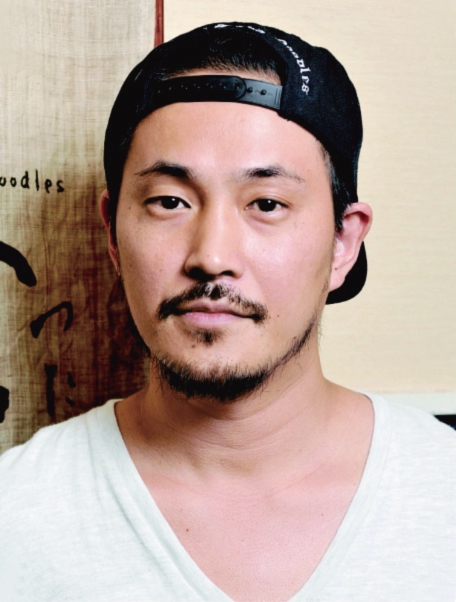
In our shop, we continue to develop and develop the ideal taste of salt Tare (concentrated flavor) every day. ATAGO's salt meter can easily measure salt and is easy to operate. It is an item I always wanted to study the taste of Tare (concentrated flavor).

Owner: Mr. Naoto Kuroki
Kuroki's high quality salt and dashi broth. The level of salt can vary as the broth is made using only natural ingredients. Kuroki utilizes salt meter to ensure the consistency of the broth; keeping balance of the salt from the natural ingredients and the salt that is added.
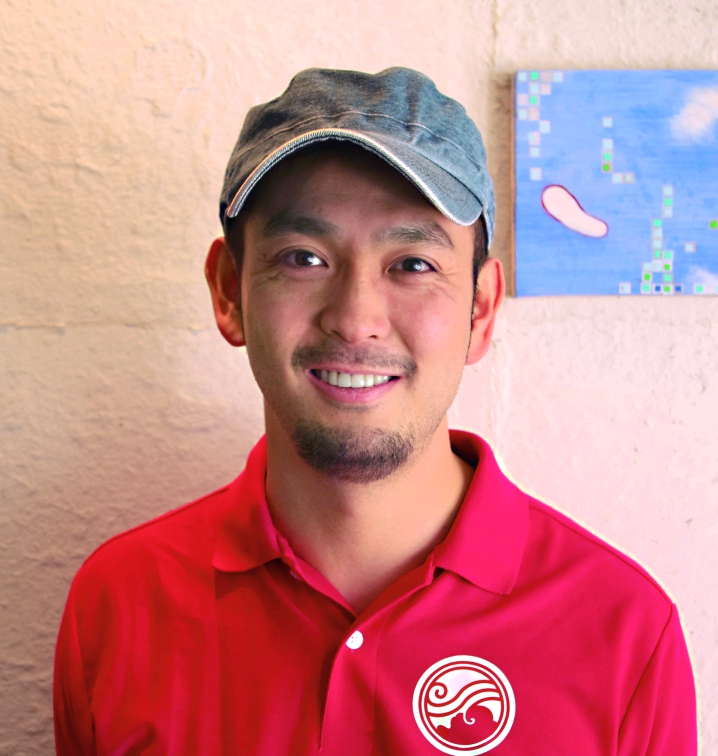
Owner: Mr. Chihiro Miyazaki
Our restaurant uses ATAGO's PAL™(PAL™-96S/PAL™-Easy SALT) to measure Brix and salt content. The PAL unit is easy to use, allowing for consistent flavor for every batch. The PAL unit is integral to our restaurant.
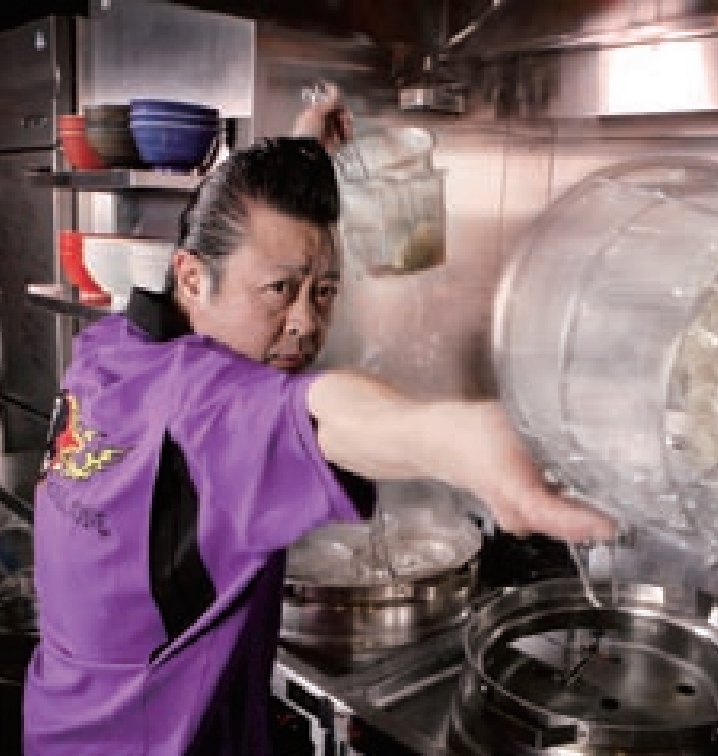
PAL is never a product that produces taste or brings out deliciousness. You can adjust the taste.
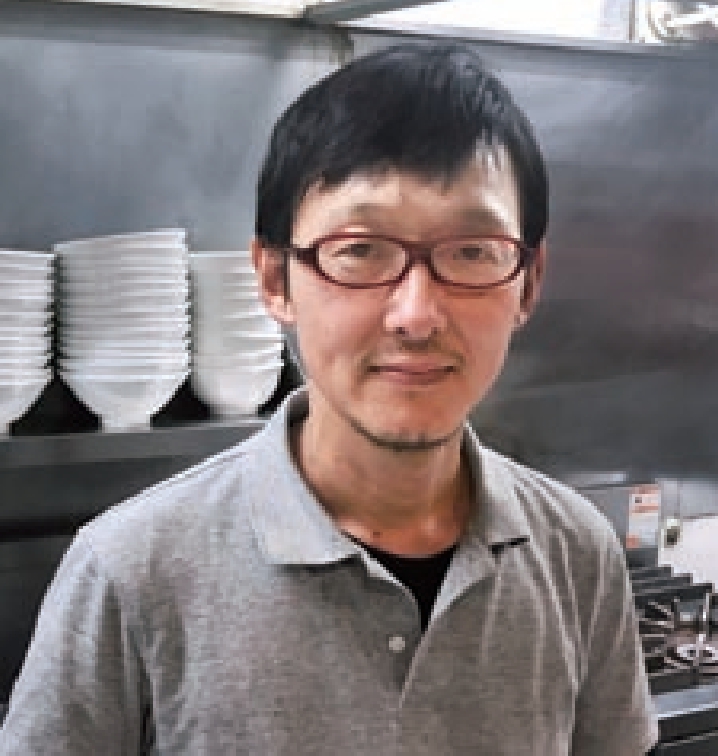
Owner: Mr. Katsumasa Hori
By digitizing the aiming taste, it makes it easier to make stable products. When the value breaks, it is also important to think about the cause.
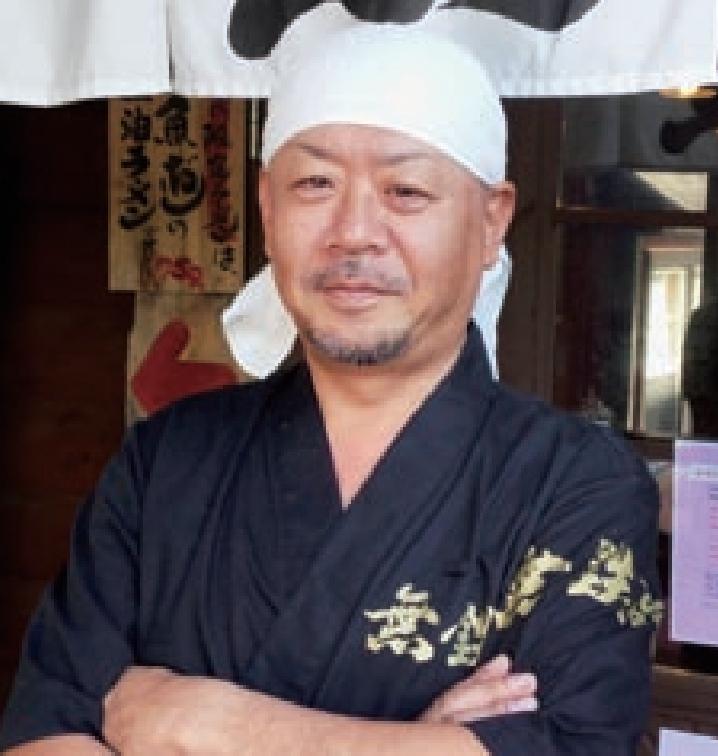
Owner: Mr. Shigeyuki Akasako
Tonkotsu soup of Muteppou is a soup with plenty of collagen made with high quality domestic pig bone and water only.
Every day, it is stewed until the bone marrow melts.
We are using special attention to products that are not sold face to face. The Brix and a salinity meter is one of the indicator to judge whether the usual soup has been made or not.
While making the sense of craftsmen cultivated through years of know-how as an important part of the taste index, the Brix meter is useful as a supporting tool, which can objectively see a small change in daily life.
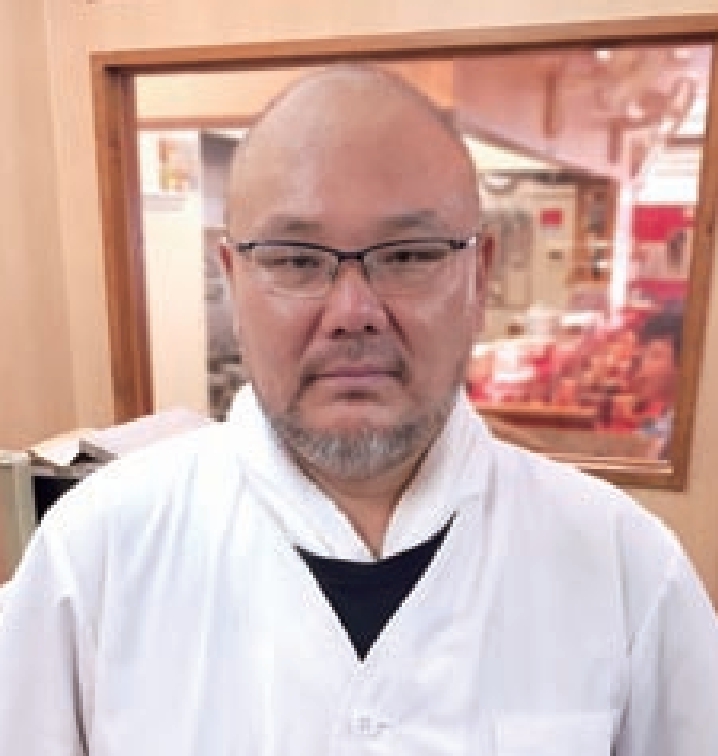
Owner: Mr. Kazuyoshi Tachibana
By adding extra effort, we can see the material change in accordance to seasonal change. We measure three kinds of soup respectively. I am also committed to noodles so we are also measuring Kansui. Since it is equipped with automatic temperature compensation there is no need to worry about the temperature.
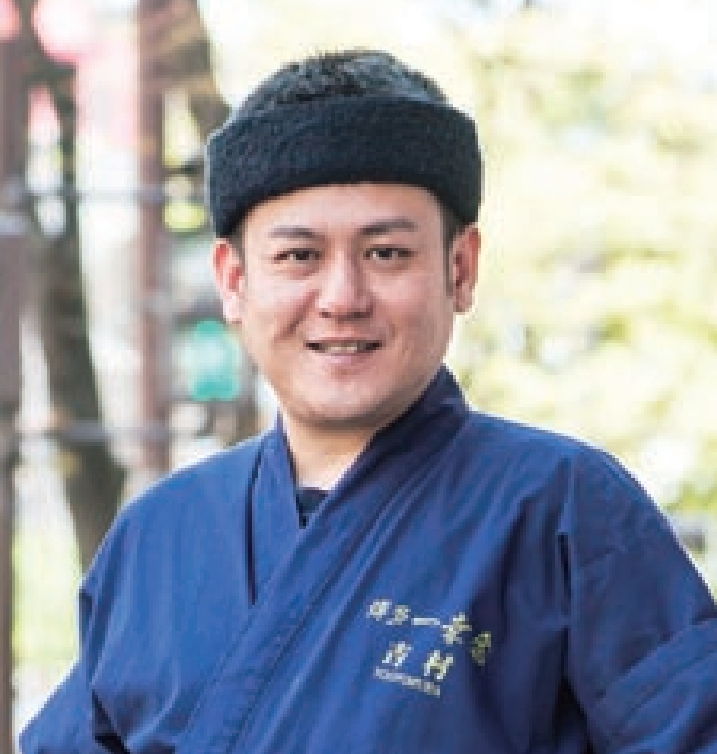
Owner: Mr. Yusuke Yoshimura
Wherever you eat you can offer authentic taste!

Owner: Mr. Yuuto Nakazato
Essential to maintain the concentration of soup balance of pork, chickens and seafood based soups.
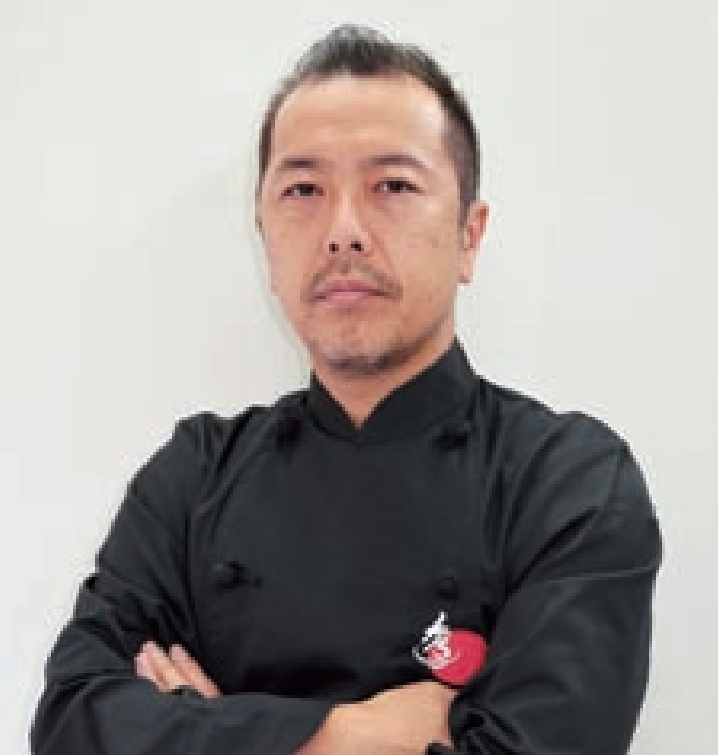
Owner: Mr. Hideto Kawahara
I am using a Brix meter to make thick and rich pork bone soup that sticks to the noodles.
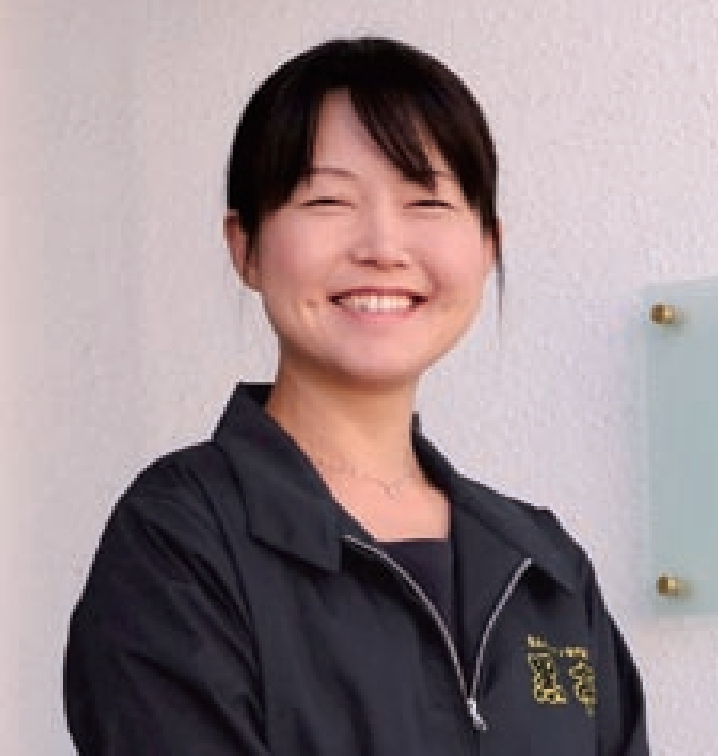
Owner: Ms.Kyoko Hirabayashi
I am using a Brix meter to preserve the taste of orthodox Kumamoto ramen.
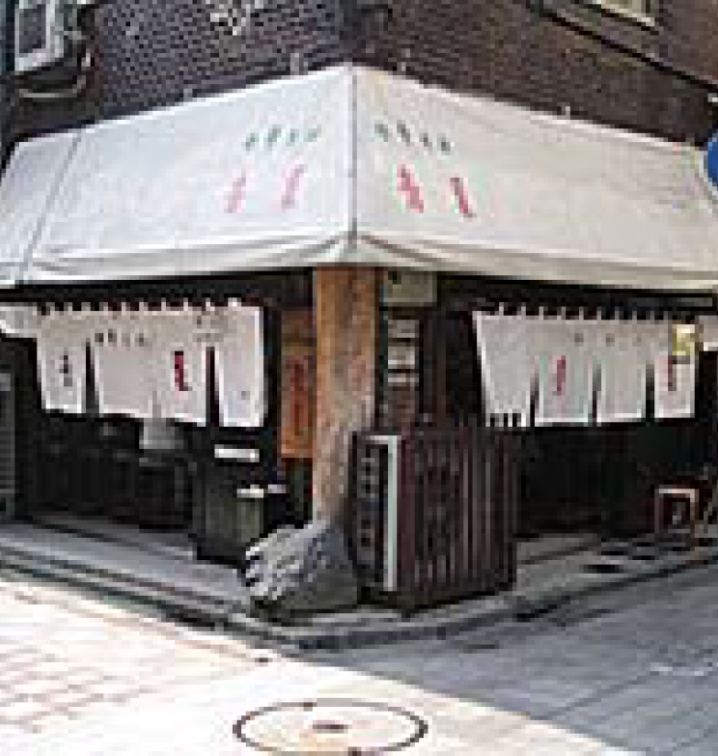
To keep the "consistent taste," our restaurant uses" scientific method." The ATAGO's ramen refractometer supplements the chef's experience and intuition. The chef's condition affects the flavor. To provide consistent flavor to customers, we use ATAGO's refractometer to check for Brix and salt in the soup on a daily basis.
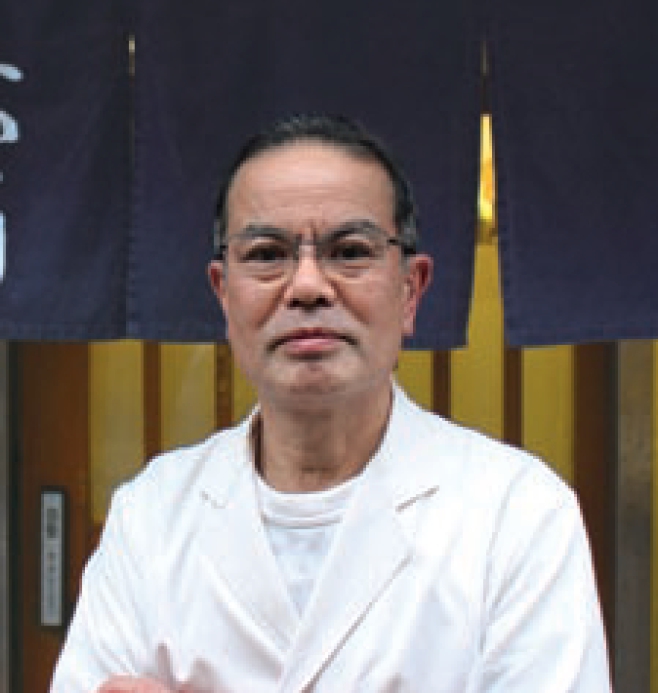
Restaurant Owner Mr. Matuo Onodera
‘Dashi’ (Japanese soup stock)- The best timing to remove ingredients from the stock soup is when the element of ‘umami’ (the fifth taste) has most steeped out. Concentration monitoring is important in determining when the dashi is ready. The ATAGO's refractometer is very useful for concentration management.
"Te-uchi ('Handmade') Soba - Matsuou" is a very famous soba shop in Kanda Sarugaku-cho, Tokyo. It's been featured in various media including a book written by well known author Shotaro Ikenami.
They use our refractometers to measure concentration of “dashi” or soup stock, which plays a vital role in their house soba sauce.
The restaurant is located in a quiet alley in Shirayama street, near Suidoubashi station.
Today, we had an opportunity to talk with the owner, Mr. Matsuo Onodera.
QWhen was Matsuou established?
AOn November of 1981. I became independent when I was 31. Originally, it was a smaller shop of about 18 seats. We moved to our current location in 1998.
QWhat is the origin of the name?
AMy father named it after my name Matsuo.
QWhat's special about your soba?
AI am very particular about the quality of ingredients I use.
For one, I do not use any artificial flavoring. Before becoming independent I worked at another soba restaurant, and I was shocked to find out that their "secret ingredient" was artificial flavoring. I knew that it was becoming more common for restaurants to use them, but I promised myself to stick to only natural ingredients.
It was not an easy task though. I had to start from scratch. In one book I read that when simmering dashi, “umami” transfers back and forth between dashi and ingredients. So I thought: “if that’s the case, I want to complete the dashi when its umami is at its peak!”
That’s when I started using refractometers to measure concentration of dashi. Back then I was using an ATAGO N1. I took measurements every 5-10 minutes for two hours, and noticed that concentration does indeed keep changing.
I did a lot of experiments to find out the relationship between refractive index and the timing at which maximum umami is extracted out into the stock. For example, after straining, I taste the bonito flakes to check how much flavor remained. From such experiments I also realized that amount of extraction differs with thickness of bonito flakes, so I repeated the first experiment with various thickness of bonito flakes.
From what I found with all my experimentations, it's best to shave dried bonito very thin, right before use. I've found the perfect balance to be 8% bonito flakes in water, though this could vary a little depending on the quality of bonito.
Now using the newest model PEN-J and PAL
QIs 8% high or low concentration?
Also, is this confidential information?
AI think it's higher than average. Typically it is about 4 - 5%. This is not confidential; even if someone tried to make their stock with 8% bonito, they wouldn't be able to make it the same flavor as mine. I think it's important that everyone comes up with their own flavor.
(Mr. Onodera checks his notebook that has all the measurements recorded. )
For example, even with same ratio and recipe, dashi concentration can vary by day, as I've recorded here - 1.3%, 1.4%, 1.7%. There are various factors, such as when and where the bonito was caught, as well as flavor and fat content of bonito. Also sometimes bonito can be more salted than others, which can affect the flavor.
QIs there a way to differentiate better quality bonitos?
AYes, I examine by its texture, firmness, and sound. At first I had no way of telling. I visited Kyushu, Sapporo – known as Japan’s best production site of bonito flakes - to learn all the tricks.
Another important component of dashi is konbu (seaweed). I don’t measure refractive index for konbu-dashi because the concentration is typically very low. When our shop first opened, we were on a budget so we were using inexpensive Hidaka konbu to take dashi. From there I progressed to Rikyuu konbu, and now I’m using an all-natural konbu from Hokkaido.
QWhat other ingredients are important?
AFor condiments, I also only use brands that use all natural ingredients. I went to all their manufacturing sites to make sure it was really what I was looking for. I am also very particular about the shrimp I use for tempura. I used to use frozen shrimps, but with those the tails come out dark when cooked. Only fresh shrimps have that pretty red color. So I started buying fresh shrimps, but the problem with that is the inconsistency of stock and high cost. As a solution, I installed a fish tank in my store so I can keep live shrimps on hand.
Another very important ingredient is buckwheat flour that I use to make soba. I import it directly from a farm in Ibaragi. I also make a visit there periodically.
I found that right after rainy the season, noodles tend to break apart easily. Same happens when you leave it too long after it has been ground. I installed a flour mill at the shop so I have fresh ground buckwheat flour daily. It takes about two hours to grind, and then it needs to be shifted, so we prepare the flour a day ahead.
Flour mill and soba making station is surrounded by a glass so that customer can see the whole process.
Matsuou also has a daily menu, featuring many unconventional flavors of soba.
Mr. Onodera clearly has strong passion for soba, and his attentiveness shows in every detail of soba making process. Much labor and time is put in his product, not to forget the superb quality backed up by his own evaluation. We hope everyone will get a chance to try!
Mr. Onodera, thank you for your time and the delicious soba.
We appreciate your continued support of ATAGO refractometers.
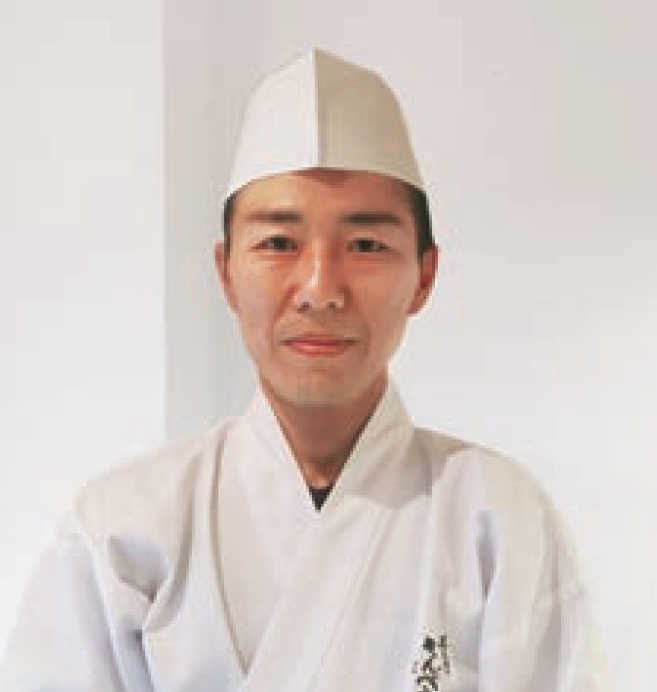
Restaurant Owner Mr. Jiro Sasaki
What is essential for soba restaurant is a properly made ‘soba tsuyu’ (dipping suce/soup) or ‘soba’ soup that coats the soba noodles evenly and adds a proper amount of saltiness that brings out the sweetness of the soba noodles. With ATAGO's Udon Soba Meister Set, I am confident with my ‘dashi’ and maintaining its flavor. PAL plays an active part in managing the ‘dashi’.
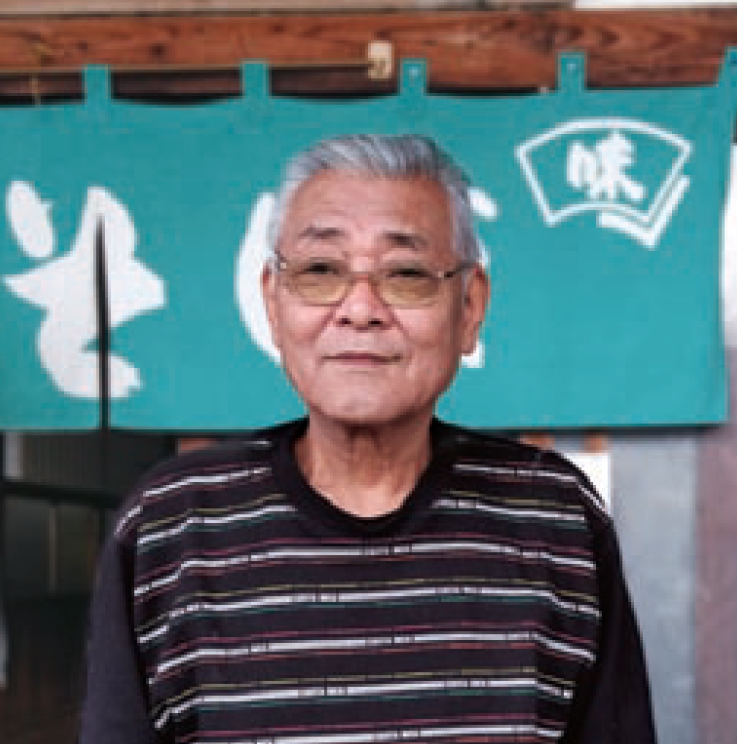
Restaurant Owner Mr. Eiichi Ichimaru
‘Soba's’ flavor changes day to day with change in weather and humidity,hence the ‘soba tsuyu’ must be adjusted accordingly. When using natural ingredients, its taste will differ from one ingredient to another. Rather than cooking by measuring quantities of ingredients, it requires one to adjust the flavor by understanding the subtle differences. PAL is suitable to make ‘soba’ that goes well with the day.

Mr. Suzuki
In order to offer the most delicious ‘soba’ possible,a proper soba ‘tsuyu’ (dipping sauce) concentration is essential.
ATAGO’s concentration meter (PAL) has been used for over two generations.
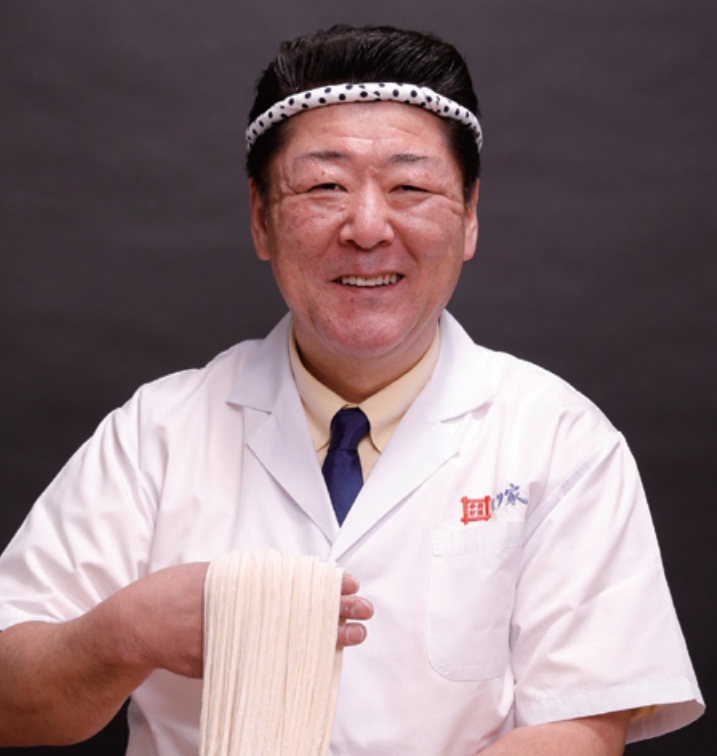
Restaurant Owner Mr. Shinji Morita
Moriya is committed to providing full-fledged handmade ‘sanukiudon’ (noodle made using wheat and flour from Kagawa of Japan). Mr. Shinji Morita (store owner) is devoted to making 120% delicious ‘udon’ that is beyond perfection; only achievable with handmade ‘udon’. For the perfect ‘udon’, PAL and PAL™-03S are impeccable.
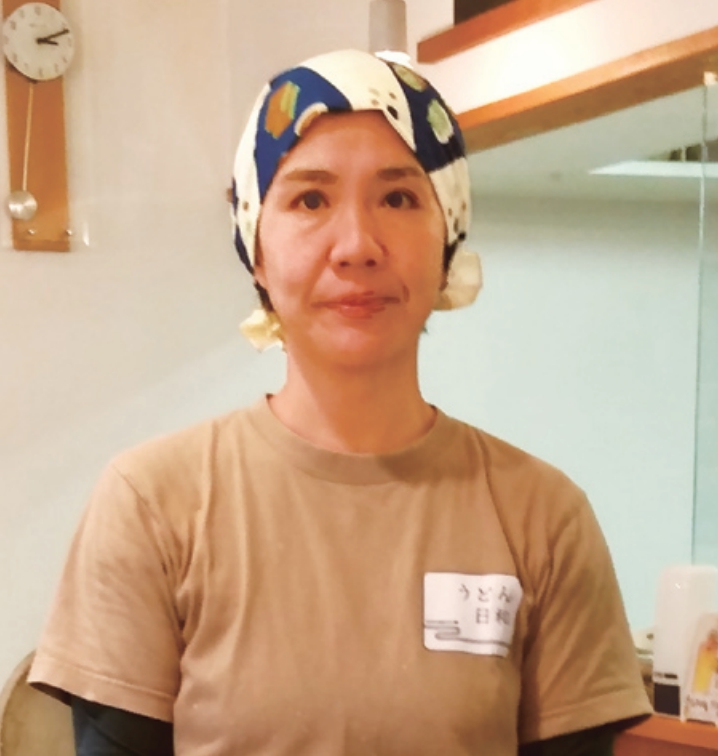
Restaurant Owner Ms. Chie Yarimizu
The shop owner Chie Yarimizu said,
We are very particular about using all natural ‘dashi’. The flavor of ‘dashi’ must be adjusted as natural ingredients vary from one to another. Sense of taste may be affected by one’s condition; thus, using ATAGO’s concentration meter (PAL™-05S) is beneficial.
※UdonBiyori is featured in the Michelin Guide.
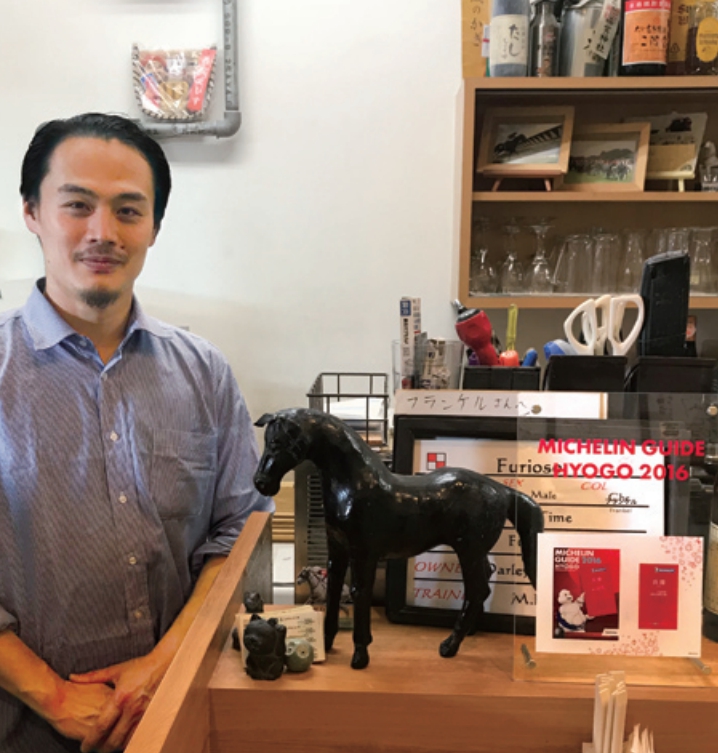
Restaurant Owner Mr. Keisuke Harada
In order to make specialty handmade noodles, checking salinity is vital. Likewise, savory ‘dashi’ that bring out the flavor of the noodle is considered important.
"We don’t just rely on our experiences and intuition but we use ATAGO's Brix meters (PAL™-03S) to check the flavor” says the craftsman, Frankel’s owner Mr. Keisuke Harada.
※Franken is featured in the Michelin Guide.
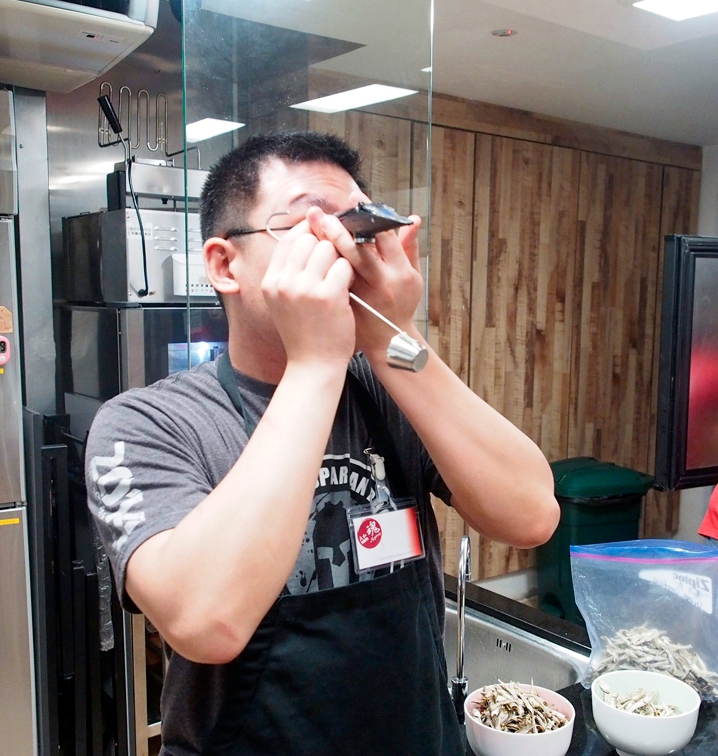
At our school, students study hard to learn the know-how and techniques required to become a successful ‘udon’ restaurant.
After mastering the basics of noodle, ‘dashi’, ‘tsuyu’,‘tempura’ (deep fried vegetables, seafood, or other food in a light batter), food arrangement and applied techniques, the PAL/MASTER-S28α is used to numerically express the flavor to make one of a kind bowl of ‘udon’.
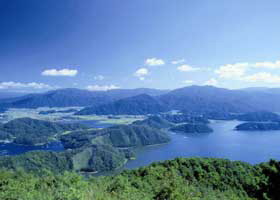
Landscape of Mikatagoko in Wakasa Town
Health and Medical Division in The Wakasa Town in Fukui Prefecture uses PAL™-SALT PROBE as part of its efforts to prevent hypertension.
Since many local residents have high blood pressure, they are measuring salt for the purpose of raising awareness of salt reduction.
On the 17th of every month, "Salt Reduction Day," we visit each district community center to measure the salt content of food brought by local residents.
http://www.jpnsh.jp/topics/562.html
At the Wakasa Town, Salt content had been measured using PAL-Easy SALT, which measures by dripping style. However, they changed to use PAL™-SALT PROBE to improve measurement efficiency, as PAL™-SALT PROBE PROBE enables to measure by inserting into food.
We decided to use PAL™-SALT PROBE since we are able to easily measure meals such as fried eggs, sauces, miso soup, meat potatoes, and pickles,
We look forward to your continued patronage.
Website of Wakasa Town
http://www.town.fukui-wakasa.lg.jp/
Totenkaku Royal Chinese Restaurant has over seventy years of history and is a long standing Chinese restaurant. The main restaurant uses the mansion known as ‘Ijinkan’ which was originally built as a residence for a man of German descent F. Bishop, in Kitano, Kobe. Totenkaku is known as a place where one can enjoy the finest royal Chinese cuisine in an atmosphere that is a blend of Western and Eastern architecture. Including the main restaurant, there are three restaurants in Hyogo prefecture, Japan in Ashiya, and Seishin.
Totenkaku is using the PAL™ to monitor their ground meat soup. The ground meat soup is the soup base, ‘Totenkakuno aji’ which means Totenkaku’s flavor and is used for various dishes. For this reason, the soup base flavor should not fluctuate day to day depending on which store it was made. When we rely on our senses, the flavor can be affected by one’s physical condition, or personal differences. Implementation of a concentration meter that can objectively measure flavor was considered.
We asked Totenkaku the reason for selecting our digital model, the PAL™ series instead of the analog model where one would look through an eyepiece.
PAL™ quickly measures with a press of a button and the measurement result can be checked. The fact that it can be washed under running water make is a user friendly.”
Preserving their traditional taste, Totenkaku is loved by their customers. We hope for your further success and thank you for your continuing patronage.
Please check out Totenkaku’s webpage.
http://totenkaku.com/
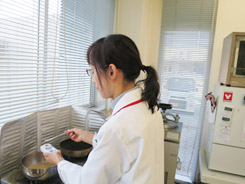
Ringer Hut Co., Ltd.
Mr. Tatsuo Kawauchi from the sales strategy department commented as follows:
Since its establishment, Ringer Hut has focused on providing high quality, tasty, healthy and safe meals using only the freshest ingredients.
Among other ingredients, domestic cabbage, which is eaten every day by many customers, is researched to find the diamond in the rough or the best suitable type of cabbage for ‘champon’ (a noodle dish that is a regional cuisine of Nagasaki, Japan).
Every variety is analyzed for Brix and soil analysis.
Flavor changes not only with variety but is also dependent on factors such as season, locality, and how much time was allowed between harvest and processing. An equation of all the above factors determines just how tasty the end product will be.
Especially, since the cabbage in ‘champon’ is cooked, the nutritional value of the cabbage once it is cooked is also considered to make sure that customers are served the best tasting cabbage.
Nevertheless, Ringer Hut sincerely feels that their pursuit of delicious ‘champon’ and delicious cabbage will eventually help support the farmers of Japan, who, in recent years have been experiencing problems due to lack of successors.
In the pursuit of delicious flavor and sustainable supply, contract farmers are absolutely imperative.
While experience is of course essential, objective numbers are necessary in the pursuit of delicious flavor.
For instance, a Brix meter is used to measure Brix, which is an important factor in determining the taste of cabbage. Similarly, concentration meters and salt meters are used during the product development of soup and ‘tare’ (dipping sauces). Objective figures are indispensable as they are important points in defining what tastes good and help maintain consistent flavor.
While ensuring food safety and security, and pursuit of delicious flavor, Ringer Hut will continue to strive to grow with the support of our customers and contract farmers.
Thank you for your continuing patronage.
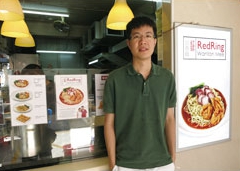
Mr Roy Chan
We interviewed Mr Roy Chan, who runs a noodle shop in Singapore.
We have been using the Atago saltmeter and refractometer for the past 5 months and are very satisfied with their performance.
We have been using the saltmeter to assess the saltiness of both our soups and noodle sauces during recipe development and also for daily consistency checks.
Our business currently produces 200kg of noodle sauces per week and these Atago meters are indispensable in helping us to ensure the consistency of our sauces.
Additionally, Atago's refractometer comes in handy in making sure that our soup is boiled to the right concentration.
By assessing the refractometer readings, we can take corrective measures of either boiling down or diluting with water in order to achieve our desired consistency.
We strongly recommend the use of Atago's meters for restaurant owners and sauce makers as a means of ensuring consistency in their sauce and soup products.